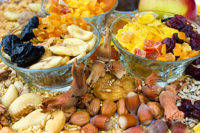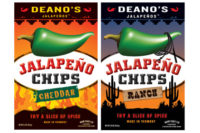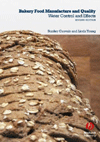It’s Not A White Bread World Anymore
By Lynn Petrak
Many retailers are behind the times and promote bread and sweet goods exactly as they’ve done so in the past. As a result, they fail to realize the full sales potential for baked goods, despite efforts by bakers to roll out new varieties and try different promotions to invigorate sales.
In today’s vernacular, the term “white bread” often is used to describe something rather ordinary or stuck in the past. Even as white bread remains a top-selling staple in the supermarket, the analogy has some merit, given the fact that the commercial bread aisle today includes more varieties, from vitamin-enriched to multi-grain to seasoned loaves and rolls.
It’s so American, really, that uniformity continually gives way to variety and that loyalty and new preferences can simultaneously flourish. Although it is a stretch to say that the bread aisle reflects democracy in all of its glory, it is true that consumers are looking for new products to suit their increasingly sophisticated palates — and that they voice their choices at the cash register.
Consumers look for both traditional products and emerging favorites at their neighborhood grocery stores as they are exposed to new tastes in foodservice settings. As those retail outlets compete in an ever-tightening field for the proverbial share of stomach, they, too, must realize that it’s not a white bread world anymore.
Specifically, Burt P. Flickinger III, managing director of the New York City-based Strategic Resource Group, notes that there is a gap in what is happening and what is possible in the commercial bread aisle. As a result, breads and other baked goods are under-promoted.
“Bread can be the most profitable category and should be as signature of a category as milk and meat, but retailers don’t have sufficient space or the depth and range of assortment to accommodate consumer demand,” he says. “And too often, the bread buyer is outvoted by other buyers.”
Another industry observer, Doug Adams, president of Prime Consulting Group, Bannockburn, Ill., adds that the window is closing for retail buyers who continue to do things the way they have always been done.
“They have to define what is unique about their offering — what makes them special,” he says, noting that such efforts can be easier said than done.
“For a DSD [direct-store distribution]-driven organization, if they are selling more products across the same amount of stores and have a shelf life cap to deal with, it can be extremely challenging,” says Adams. “You have to manage them more carefully than ever before.”
Still, the bread aisle can be a point of differentiation, especially for families consisting of white-bread traditionalists and multi-grain or artisan bread fans.
“That is where stores can emphasize that they offer a wide variety of things. So if there are different preferences in a household, you can meet those needs,” Adams says.
Taster’s Choices
Although many new products in the commercial bread aisle have been geared toward the health-conscious buyer, there have been other drivers of development. The surge in multi-grain products, for instance, reflects not only health and nutrition, but also shoppers’ evolving taste preferences.
Indeed, as consultant Dan Raftery, president of Raftery Resource Network, Inc., Antioch, Ill., says, taste can never be discounted. “I personally like whole grain,” he says. “You can go into an aisle that is 120-ft. long now, with loaves of bread, and can find maybe 20 that are good,” he says.
Flickinger, for his part, says that a few bakers have broadened their offerings by developing flavor-inspired items such as toasting breads and ingredient-infused varieties. “In terms of quality, you have Thomas raisin toasting bread, which was a good initiative,” he says, adding that sampling is a proven tactic for getting flavorful new products into the hands and mouths of shoppers.
Although sun-dried tomatoes, basil and garlic aioli breads may not be as present in the commercial aisle as in specialty stores and even some in-store bakeries, there are products to satisfy consumers looking for something beyond the staples of white, wheat or rye breads. It is not unusual, after all, to find buttermilk, potato, honey or oatmeal varieties in the grocery section. For instance, among its several new Baker’s Inn offerings, Kansas City, Mo-based Interstate Bakeries Corp. (IBC) last year included new Crunchy Honey Oat and Cinnamon Wheat profiles.
The P’s of Marketing
As a basic business textbook explains, product is only one part of marketing. The other “P’s” of marketing that are tied into new product development include price, packaging and promotion.
As with other food categories, price significantly impacts the way products are merchandised in the commercial bread aisle.
Depending on the general economy, price may be an ebb-and-flow kind of issue, but it has always been present in this category. A look at the Top 10 selling bread products, after all, reveals that private label products — usually sold at lower prices than their branded counterparts — still rank at the top of the category. And the surge of discount retailers such as Wal-Mart, Costco and Sam’s Club is a testament to the power of discount pricing.
Industry experts agree that real and perceived value remains a hallmark of consumer behavior when it comes to retail bread purchases.
“One of the most fascinating things about the bread aisle is the reappearance of item pricing on many products, especially private label,” relays Mona Doyle, founder and director of Philadelphia-based research and consulting firm The Consumer Network, Inc.
Food industry analyst Mitch Pinheiro, director of research for brokerage firm Janney Montgomery Scott, LLC, Philadelphia, agrees that private label products remain formidable competitors, at least for wheat and white bread branded products.
“The reason you can’t sell branded white bread is because private label is where white bread is the anchor. That is a way to get people in the store. When white bread goes on sale with private label, it is a traffic generator,” he remarks, adding that the emergence of other private label varieties could put another dent in the category.
“It would certainly be a threat if Wal-Mart and other retailers said they had an offering in the multigrain area,” he says.
Price also factors into the successful marketing of bread at the retail level. Although packaging changes in recent times have largely focused on health benefits, such as labeling relating to trans-fat levels, different packaging materials double-wrapping for freshness and eye-catching graphics do not go unnoticed.
To generate more excitement in the bread aisle, Pinheiro says, bakers and retailers are setting up more independent displays. Such displays, he adds, look more appealing and more effectively capture the eyes of consumers.
Flickinger agrees that going beyond the bread aisle has its advantages
“When you put a bread display up, sales can go up 70% versus a normal bread display,” he points out.
Cross-merchandising is another way to get consumers to think about bread in a fresh way and hence move more stock-keeping units (SKUs).
“If consumers see it in different parts of the store, they associate, whether it’s with tuna, in delis or closer to the produce section,” Flickinger says.
As bakers improve on their promotional programs, Flickinger stresses that supermarkets and other retail chains can do much more to aggressively push commercial bread products.
“Retailers are hurting bread businesses by not properly promoting the category,” he says.
Snack Attack?
In many mainstream supermarkets, the bread aisle is also home to other products besides loaves and rolls, including such items as commercial snack cakes. However, in many progressive stores, snack cakes and other impulse-driven sweet goods are more often found in end caps and other special displays.
As in the pre-packaged bread sector, the snack cake category has had to grapple with issues relating to rising production costs, retailer support and a relatively slower pace of new product innovation. Another challenge has been the drumbeat of health and nutrition in the general marketplace.
“Snack cakes are in a precarious position these days, with health perceptions and different articles coming out on the impact of trans-fats and sugar,” Raftery explains.
Despite the pall cast on snack cakes, the category does have some bright, or at least brighter, spots. For one thing, Interstate has tried to inject variety into the category with its Hostess line. In the summer of 2005, for example, Hostess debuted limited edition Chocolicious Wonka Cakes tied into the Warner Bros. motion picture “Charlie and the Chocolate Factory.
Elsewhere on the promotional front, IBC enlisted three of professional racing’s leading women drivers, including Danica Patrick, to become Hostess “Race Divas,” in anew sponsorship agreement. The sponsorship program involves Hostess Twinkies, Cup Cakes and Donettes and includes special limited-edition packaging and displays.
Although the snack cake category has been through health phases before — remember Twinkie Lights? — there has been other activity recently on the better-for-you front. A new line of Weight Watchers snack cakes, distributed by Jackson, Mich.-based Dawn Food Products, Inc., was rolled out in supermarkets in the past year. The line includes chocolate cake and carrot cake varieties, as well as reduced-fat, reduced-calorie and reduced-carb muffins. “You can buy them either single use, immediate consumption or in multipacks. The whole portion-control thing is an issue,” says Raftery.
Pinhiero says that such better-for-you snack cake varieties appeal to the waist-watching segment of the population, but are not likely to become dominant.
“We’ve had waves of various health kicks throughout the years. While I do believe there is a consumer for these light products, it’s not a big category, and I don’t think it’s going to grow long term,” he says. “When it comes down to it, most snack cakes are consumed by teens and under that age.” SF&WB
Editor’s Note: In this second in a series on the state of retail and foodservice industries, our report highlights how many retailers continue to under-promote baked goods.
IDDBA Moves Annual Show to Orlando
Because of the destruction caused by Hurricane Katrina and its aftermath, the International Dairy-Deli-Bakery Association (IDDBA) is moving its annual seminar and expo from New Orleans to Orlando.
The 42nd annual show will be held from June 11-13 at the Orlando Convention Center. The theme of next year’s show is “The Show of Shows. The Greatest Food Expo on Earth.” For more information, visit www.iddba.org.
Meanwhile, IDDBA’s board approved a $100,000 donation to the New Orleans Public School system. The money will be used to replace school and library books damaged by the floodwaters following the hurricane.





